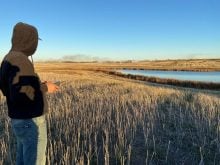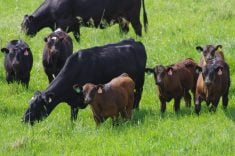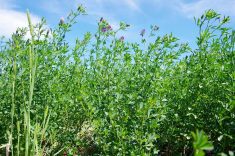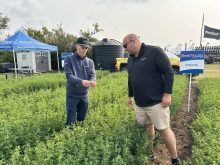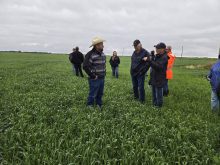Livestock producers need a plan for moving their animals and hay to higher ground before flood waters start rising.
“Make arrangements now in case cattle and other livestock need to be moved, or have a plan to utilize other facilities in case of flooding,” says Charlie Stoltenow, North Dakota State University extension service veterinarian.
“Livestock and flood waters do not mix,” he adds. “Trying to rescue cattle and other large livestock in deep-water situations is a dangerous and losing proposition, and it can be deadly both to the animal and you. Water temperatures are near freezing, and there’s floating ice and debris.”
Read Also

Beware giving horses too much iron
Horses consuming too much iron through diet or water water can risk health problems like laminitis. Mineral testing forage and water is good practice for horse owners.
Heavy snowfall this winter makes flooding likely in some parts of North Dakota.”
As with last year, areas may flood that have not seen flooding before,” Stoltenow cautions. This could be a problem for livestock producers because calving often occurs in low-lying, sheltered areas.
Also, hay production was above average in 2010, and some of this hay is being stored in areas with a high risk of flooding, such as low spots in fields and along creeks and rivers, and on the wrong side of roads that could wash out.
More than 100,000 cattle, including calves, were estimated to have died in North Dakota in the springs of 2009 and 2010. Many were trapped by flood waters.
Flooding also prevented producers from reaching feed supplies for their livestock.
“It is easier to move or blow snow on top of frozen ground to get to your hay now than it is to try to fight three feet of mud with three feet of water on top of that,” Stoltenow says.
“Early February may be too soon to move a lot of snow to accomplish this, but producers should have their contingency plans in place by mid-March, if not sooner.”
Having feed supplies on hand is important because producers can’t count on feed or fuel assistance being available during a flood.
———
“Areasmayfloodthathavenot seenfloodingbefore.”
– Charlie Stoltenow


